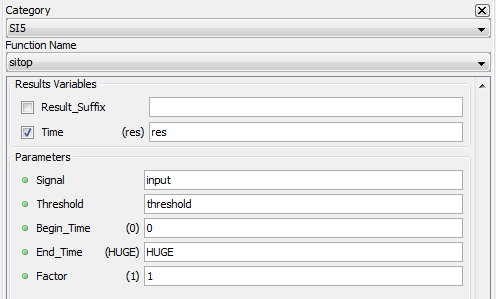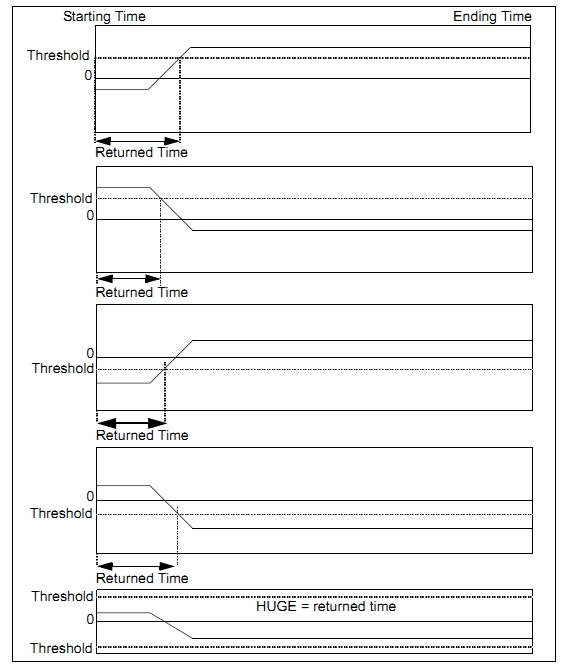Documentation Home Page ◇ HYPERSIM Home Page
Pour la documentation en FRANÇAIS, utilisez l'outil de traduction de votre navigateur Chrome, Edge ou Safari. Voir un exemple.
Advanced | SITOP
OPERATING TIME – [SITOP]
Compute the operating time of a relay.
CATEGORY
Advanced
DESCRIPTION
This function allows to compute the operating time of a relay.
RESULT VARIABLES AND PARAMETERS
Res: time in milliseconds [ms] for which the threshold value is reached on the signal analyzed, as of the specified begin_time. The returned time is the time relative to the starting time and not relative to time 0.
If the returned result is HUGE, this means that the relay did not operate within the set limits. More specifically, no change of state relative to the threshold value was detected within the limits of the analysis, as compared with the state at the beginning of the analysis.
| Signal | Signal to analyze. |
| Threshold | Threshold to reach on the signal analyzed showing that the relay operated. The threshold value is reached when there is a change of state with respect to this value. If the sample was above the threshold at the start of the analysis, then the change of state occurs when the sample read is found to be below the threshold value. |
| Begin_time | Time at which the analysis of a signal must start. This time is expressed in milliseconds [ms]. This value must be greater than 0 and lower than the duration of the test. The default value is 0. |
| End_time | Time at which the analysis of a signal must end. This time is expressed in milliseconds [ms]. The value of this time must be larger than the specified begin_time and smaller than the duration of the test. Use the “HUGE” value to specify the end of the test. The default value is HUGE. |
| Factor | Multiplying factor for the results generated by the function. The default value of the multiplying factor is 1.0 and has no effect on the results. |
SYNTAX
res = sitop( input, threshold, 0, HUGE, 1)
CHARACTERISTICS
Data type support
Double Floating point
EXAMPLE
The following figure shows the different cases which can arise when executing the sitop function. These examples can be serve as reference for the cases studied.
OPAL-RT TECHNOLOGIES, Inc. | 1751, rue Richardson, bureau 1060 | Montréal, Québec Canada H3K 1G6 | opal-rt.com | +1 514-935-2323
Follow OPAL-RT: LinkedIn | Facebook | YouTube | X/Twitter

